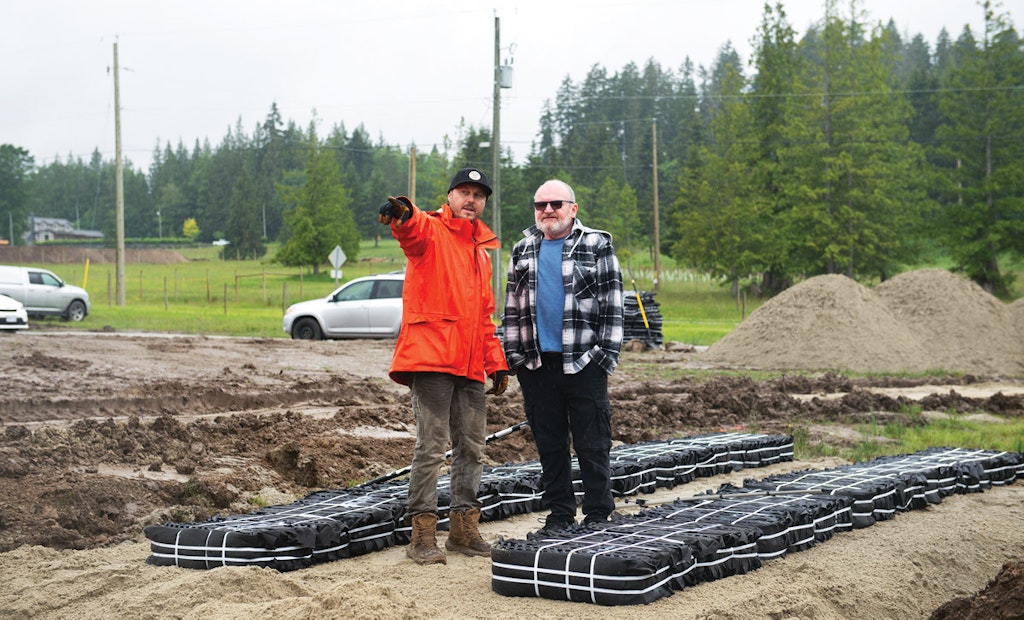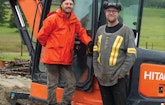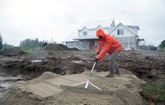
During an install, Jesse Brown, left, confers with Shaun Nuttall, a pump consultant with Suncoast Waterworks, in a bed of Eljen GSF treatment modules. (Photos by Taehoon Kim)
Customers hiring BC Septic Pro for onsite system installation don’t just get the expertise of owner Jesse Brown.
They also get the combined 60 years’ experience of system designer Steve Warren and mechanical engineer Burt Telder. Brown tapped into their industry knowledge...








